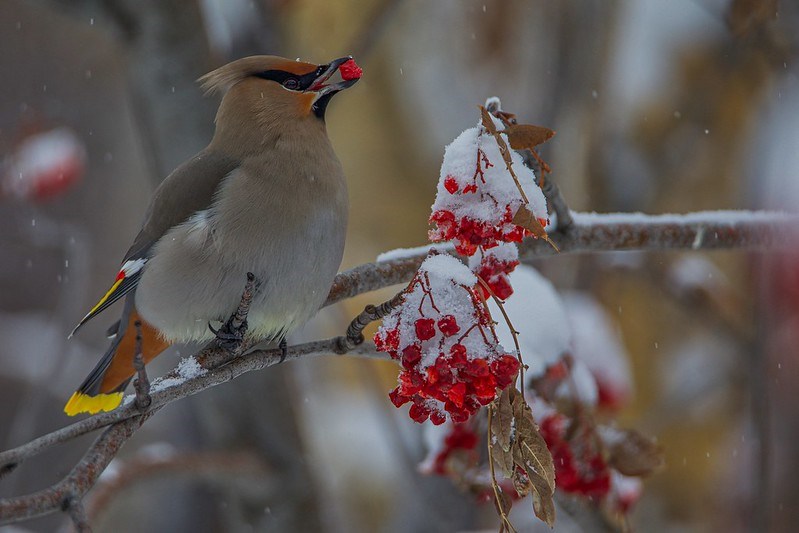ATHABASCA – Nature lovers across Athabasca are gearing up for the most outdoorsy of the town’s annual Christmas traditions, the annual Christmas bird count.
The 2024 event, which takes place on Dec. 14, marks the 30th anniversary of the count, which draws around 40 amateur ornithologists, hikers, and bird lovers for a day spent in service to science, as well as ecological health.
“We do it to track the areas bird counts, and see if they fluctuate year to year,” said Ursula Brant, event organizer and long-time participant. “We have counters that count their bird feeders and sit in their living rooms drinking coffee, and we have participants driving, walking, biking and hiking.”
While identifying a bird as it flies past may seem intimidating for a newcomer, Brant said the event, which is sponsored by the Crooked Creek Conservancy Society of Athabasca (CCCSA), has ample resources to help make the event accessible to everyone.
“We send out files of what birds to look for, there’s bird identification things online and a handout that shows that, we can recommend books that do that very well,” said Brant. “We absolutely try and pair newcomers with people, you don’t need any experience to join. You can pair up with someone that’s more experienced either hiking or in a vehicle.”
In 2023, 56 Christmas bird counts submitted data to Birds Canada, one less than 2022. Nine-hundred-ninety-one volunteers took to the fields, and another 679 counted their feeders or backyards. Nearly 138,000 individual birds, split between 111 species were counted.
“We can see trends in birds, especially throughout the winter. There’s scientists who can pick up that data and see if birds are transitioning to different areas across years,” said Heather Stocking, CCCSA’s conservation coordinator.
Birds Canada compiles a summary at the end of each season, which includes notable species that weren’t counted, as well as the areas that saw the most noteworthy birds. The hamlet of Opal, in Thorhild County, recorded six Northern Hawk Owls, the highest count in North America.
“It’s important because we can track things like deforestation; how much is that impacting where the birds are going,” said Stocking. “Deforestation changes the climate, but where is it pushing those birds to? They can track those reasons why.”
Athabasca’s most common bird in 2023 was the Canada goose, with 408 recorded in a seven-and-a-half mile radius around town. Brant stressed the importance of staying within the boundaries, which are drawn by Birds Canada to help ensure accuracy and consistency between the counts.
One-hundred-and-eighty-five black-capped chickadees were recorded, making it the second most common bird, and 112 rock pigeons were also seen, rounding out the top three.
Last years volunteers recorded single sightings of a boreal chickadee, northern goshawk, and pileated woodpecker, making them the three rarest birds.
“This gets citizen scientists — just regular people — out and enjoying nature,” said Stocking. “You can’t appreciate what you don’t see.”
Anyone interested in taking part in this year’s Christmas bird count can contact Brant at 780-689-7443, or Danna at 780-880-4438. You can also register by email at [email protected].



